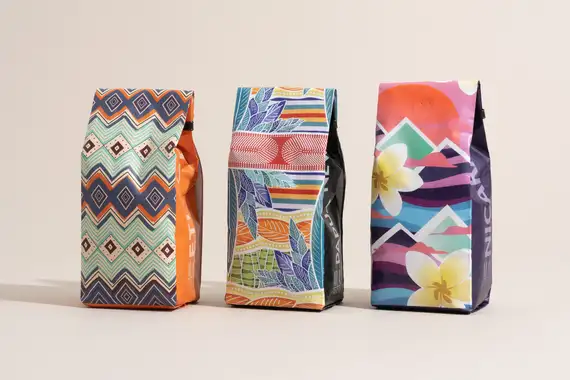Gift-giving is a universal gesture of love, appreciation, and celebration, but each culture has its unique traditions and practices when it comes to presenting gifts. The significance of gifts, the manner of giving, and the types of gifts vary widely across the globe. From the simplicity of a heartfelt token to the grandeur of a luxurious gift exchange, gift-giving customs reflect the values and beliefs of each culture. Here’s a look at some of the most fascinating gift-giving traditions from around the world.
1. Japan: The Art of Omotenashi
In Japan, gift-giving is a deeply ingrained tradition, rooted in the concept of “omotenashi,” which means hospitality and selfless service. The Japanese believe that giving a gift is not just about the object itself, but the thought and effort behind it. The presentation is as important as the gift itself, with meticulous care taken in wrapping.
- Gift Presentation: The wrapping of the gift is an art form in itself, with delicate, beautiful paper often used to present the item. Gifts are typically wrapped in a way that reflects the occasion, such as using floral designs for spring or festive patterns for the New Year.
- Occasions for Giving: Gifts are commonly exchanged during holidays, New Year, birthdays, and special milestones. It’s also customary to give gifts to express gratitude, such as for business or personal favors.
- Type of Gifts: Common gifts include items like tea, sweets, and decorative items. Practical gifts such as quality kitchenware or items that show thoughtfulness are also popular.
2. China: Red Envelopes and New Year Blessings
In Chinese culture, gift-giving plays a significant role in family and community life. The most well-known tradition is the giving of “hongbao” (red envelopes) during Chinese New Year. These red envelopes contain money, symbolizing good luck and prosperity. The color red is considered lucky, and the act of giving money is meant to bring good fortune to the recipient.
- Occasions for Giving: While hongbao is most commonly given during Chinese New Year, it is also offered during weddings, birthdays, and other significant life events. The amount of money given is often an even number, as odd numbers are associated with funerals.
- Symbolism: The amount of money given is usually modest, but it is more about the act of wishing good health and fortune. In the context of weddings, gifts often include household items or gold jewelry.
- Respect and Reciprocity: It is important to show respect and not give gifts that may cause shame or embarrassment. For instance, clocks or umbrellas are avoided, as their pronunciation in Chinese can be linked to death and separation.
3. India: The Spirit of Giving During Festivals
In India, gift-giving is a common practice, particularly during festivals such as Diwali, the festival of lights. During Diwali, gifts are exchanged among friends and family to celebrate prosperity, new beginnings, and the triumph of good over evil. Other significant occasions, like weddings and birthdays, also feature elaborate gifting traditions.
- Occasions for Giving: Diwali is a major gift-giving festival, where people exchange sweets, jewelry, clothes, and home decor items. Weddings are another occasion for extravagant gift exchanges, often involving dowries and other traditional gifts.
- Types of Gifts: Common gifts during Diwali include sweets, gold, silver, and religious items. It’s also customary to give gifts of clothing, especially new outfits, to celebrate the occasion.
- Cultural Etiquette: When gifting in India, it is important to offer the gift with both hands as a sign of respect. Also, gifts are often opened in private rather than in front of the giver to maintain humility.

4. Middle East: Luxurious and Generous Hospitality
In many Middle Eastern cultures, gift-giving is an expression of hospitality, generosity, and respect. It is often seen as a way to build relationships and maintain social harmony. Gifting is common at both personal and formal events, including weddings, religious holidays, and business meetings.
- Occasions for Giving: During Ramadan, gifts are exchanged to celebrate the end of fasting. The giving of food and sweets plays a large role, as does the exchange of items like gold, perfumes, and clothing.
- Types of Gifts: Common gifts include luxury items like jewelry, fine textiles, and perfumes. Dates, coffee, and traditional sweets are also typical offerings.
- Generosity: It is customary to present gifts lavishly, and there is a deep-rooted culture of hospitality where guests are treated with utmost respect, and gifts are given to honor their presence.
5. Mexico: Celebrating with Piñatas and Family-Oriented Gifts
In Mexico, gift-giving is not only a personal expression but also an integral part of communal celebrations, particularly during religious holidays and family events. One of the most beloved traditions in Mexico is the piñata, especially during birthdays and Christmas.
- Occasions for Giving: Birthday parties and religious festivals like Christmas and Día de los Muertos are the most common occasions for exchanging gifts. During Christmas, it’s traditional to give gifts to children, and at birthdays, friends and family often exchange presents.
- Types of Gifts: Traditional gifts include toys, clothing, and homemade sweets. In addition, during major festivals, it is common to exchange spiritual or religious items such as crosses or statues of saints.
- Piñatas: The piñata is a fun and symbolic part of many celebrations, representing good fortune and joy. It is often filled with sweets, candies, and small toys.
6. Scandinavia: The Thoughtful Gifting Tradition
In Scandinavian countries like Sweden, Norway, and Denmark, gift-giving revolves around thoughtfulness and quality rather than quantity. In these cultures, presents are often simple, practical, and deeply personal. For example, in Denmark, it is customary to give gifts to celebrate “julefrokost” (Christmas lunch) and birthdays.
- Occasions for Giving: The most prominent gift-giving times are Christmas and birthdays. Gifts are often exchanged during New Year celebrations as well.
- Types of Gifts: Practical and useful items such as woolen scarves, high-quality coffee, or artisanal food products are common. There is also an emphasis on homemade or locally crafted gifts.
- Minimalist Approach: Scandinavian cultures value a minimalist approach to gifting, where the emphasis is placed on the quality and thoughtfulness of the gift over its monetary value.
7. South Korea: Gifting with Respect and Humility
In South Korea, gift-giving is an important cultural tradition rooted in respect and humility. Gifts are often presented in elaborate ways and accompanied by formalities to show appreciation or convey gratitude.
- Occasions for Giving: Gifts are exchanged during holidays like Seollal (Lunar New Year), Chuseok (Korean harvest festival), weddings, and birthdays.
- Types of Gifts: Popular gifts include luxury food items such as high-quality ginseng, fruit, and packaged meats. Gift cards and money, particularly in red envelopes, are also common, especially for weddings.
- Cultural Etiquette: It is common for gifts to be opened in private to avoid any sense of competition or comparison among others.
Final Thoughts
Gift-giving is an essential part of human connection, and each culture has its unique ways of expressing affection, respect, and celebration. Whether it’s the meticulous wrapping in Japan, the symbolism of red envelopes in China, or the generosity in the Middle East, understanding cultural traditions can enhance the joy and significance of giving and receiving gifts. By respecting these diverse customs, we can appreciate the thoughtfulness and meaning that come with every gift.











